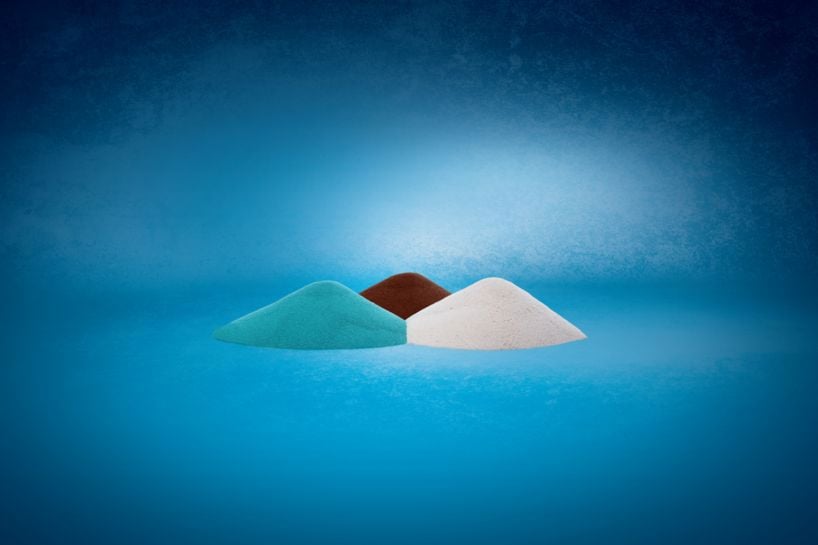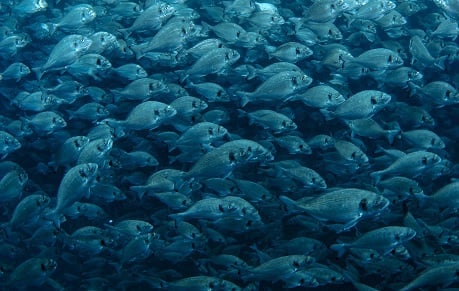
Trace Mineral Optimisation Programme
- Programme
Trace minerals are vital for farmed fish and shrimp, functioning as crucial nutrients. While aquatic animals can absorb some minerals from water, it's insufficient to meet their needs. Trace mineral supplementation through aquafeed is essential for their well-being and productivity. Regrettably, the significance of trace mineral source and levels in commercial aquafeeds is frequently underestimated.

Like vitamins, trace minerals are essential to the diets of farmed fish and shrimps and act as a limiting nutrient. Aquatic animals can take in small amounts of waterborne mineral ions, but not enough to fulfil their trace mineral needs. They require trace mineral supplementation from aquafeed for optimal health and productivity. In commercial aquafeeds, the importance and impact of trace mineral source and levels is often neglected and overlooked. At the same time, free trace minerals in feed are very reactive and can destroy or accelerate the loss of vitamins, pigments and lipids in the feed during storage. This is a particular challenge since trace mineral status in fish and shrimp is tightly regulated, and supplying an amount below or above the animals’ requirements will impair the animals’ health and reduce their growth performance. Oversupply of minerals does not guarantee a better outcome – and it has a negative impact from a sustainability perspective, as the unutilised minerals can end up in the environment and impact ecosystems.
Meeting the dietary requirements of fish and shrimps is dependent on efficiently using the right sources of trace minerals at the right levels to maintain mineral homeostasis. Optimising trace minerals in feed can enhance the overall health and performance of fish and shrimps and provide better economic return as well as environmental benefits.
Mineral leaching, or the loss of minerals from feed pellets into the water before they are consumed by fish or shrimps, can be a challenge in aquafeed. Trace minerals are usually supplemented in very small amounts – so, any loss of these minerals into the water will lead to a sub-optimal mineral supply to the animals. In aquaculture, feed pellets are directly exposed to water for a time period that varies greatly with the feeding nature of the target species. Trace mineral leaching from aquafeed can also be influenced by pellet size and surface area, water quality and the sources of the trace minerals, especially the solubility of the source. For example, inorganic mineral salts, such as copper sulphate and zinc sulphate, are very prone to leaching as they are readily soluble in water and easily dissociate in the presence of water. Therefore, to ensure the delivery of an optimal level of trace minerals, it is important to use a trace mineral source with minimal leaching loss in aquafeeds.
The biological value of a protein depends on its amino acid profile and digestibility. However, the nutritional value of a trace mineral source depends on its stability in feed, solubility in water, bioavailability in the target species and traceability. The bioavailability of a trace mineral source is a measure of the extent to which the mineral from a supplemental source is absorbed, utilised and retained in the organism. The absorption of trace minerals occurs in the enterocytes of the animal’s intestine, through metal transporters, and is influenced by species, osmoregulation and feed composition. The availability of trace minerals for absorption in the intestine is affected by chemical interactions in the gut. For instance, inorganic trace minerals salts, such as sulphates (ZnSO4, FeSO4, MnSO4 and CuSO4), have a weak ionic bond and easily dissolve and dissociate in gastric conditions, expelling free metal ions that can then interact with phytates or other mineral ions, making minerals less available for absorption in the intestine. For this reason, the chemistry of trace mineral sources is the key determining factor affecting trace mineral absorption and bioavailability. Feeding highly bioavailable trace mineral sources leads to better mineral status, immune function, overall health and growth performance.

Chemical interactions happen in aquafeed during both processing and storage, catalysed by water, heat and oxygen. Often these interactions have an undesirable effect on the nutritional value of feed, leading to, for example, the loss of vitamins, pigments and essential fatty acids. The majority of aquafeeds are produced through an extrusion process that uses high amounts of moisture and heat. This creates the ideal conditions for sulphates and other inorganic trace minerals to liberate free metal ions that are highly reactive in small amounts and can result in a significant loss of vital nutrients in the feed. In addition, inorganic sulphate trace mineral sources are hygroscopic, causing clumping and the formation of lumps in the mineral premix, leading to poor flowability, mixing and homogeneity.
The ability of fish and shrimp to resist and maintain their original health status against stress and pathogens (or, their “robustness”), and their ability to swiftly recover their original health status after deviation (or, their “resilience”) will impact their survival, feed utilisation and growth performance. Trace minerals are an integral part of the animals’ innate defence system and contribute to the production of immune proteins and antioxidant enzymes that support fish and shrimp’s defence against stress and disease. Zinc, copper, manganese and selenium are involved in the antioxidant defence mechanism and essential for the function of enzymes such as superoxide dismutase, glutathione peroxidase and catalase, which help neutralise free radicals and protect cells from oxidative stress and damage. This is an important defence mechanism for farmed aquatic animals, which are exposed to oxidative stress conditions due to fluctuations in water temperature and dissolved oxygen, among other factors. In fish, skin acts as the first line of a protective barrier against parasites and pathogens and, as a result, undergoes physical damage and infection. Zinc plays a crucial role in wound healing, due to its involvement in cell proliferation and migration and collagen synthesis, supporting tissue repair and regeneration, making it a critical element for effective wound healing. Ensuring sufficient trace mineral intake through diet supplementation can aid in overall health robustness and resilience in farmed aquatic species.